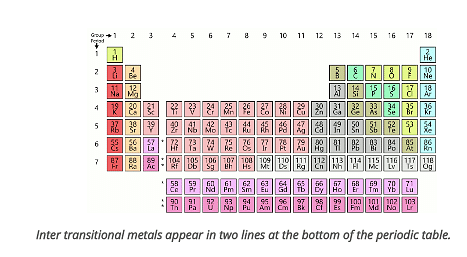Name the members of the lanthanoid series which exhibit +4 oxidation state and those which exhibit +2 oxidation state. Try to correlate this type of behavior with the electronic configurations of these elements.
Name the members of the lanthanoid series which exhibit +4 oxidation state and those which exhibit +2 oxidation state. Try to correlate this type of behavior with the electronic configurations of these elements.
Solution and Explanation
The lanthanides that exhibit +2 and +4 states are shown in the given table. The atomic numbers of the elements are given in the parenthesis.
| +2 | +4 |
| Nd(60) | Ce(58) |
| Sm(62) | Pr(59) |
| Eu(63) | Nd(60) |
| Tm(69) | Tb(65) |
| Yb(70) | Dy(66) |
Ce after forming Ce4+ attains a stable electronic configuration of [Xe].
Tb after forming Tb4+ attains a stable electronic configuration of [Xe] 4f7.
Eu after forming Eu2+ attains a stable electronic configuration of [Xe] 4f7.
Yb after forming Yb2+ attains a stable electronic configuration of [Xe] 4f14.
Top Questions on d -and f -Block Elements
- The element that has the highest melting point in the 3d series is:
- KEAM - 2025
- Chemistry
- d -and f -Block Elements
- Which of the following sets are correctly matched?
i. P$_2$O$_3$, N$_2$O$_4$ - acidic
ii. N$_2$O, NO - neutral
iii. SeO$_3$, TeO$_3$ - basic
iv. As$_2$O$_3$, Sb$_2$O$_3$ - amphoteric
The correct option is- TS EAMCET - 2025
- Chemistry
- d -and f -Block Elements
- Assertion (A): The order of acidic strength of hydrogen halides in aqueous solution is HF < HCl < HBr < HI.
Reason (R): The order of bond dissociation enthalpy of hydrogen halides is HF > HCl > HBr > HI.- TS EAMCET - 2025
- Chemistry
- d -and f -Block Elements
- The magnetic moment of \( \text{Mn}^{3+} \) is:
- MHT CET - 2025
- Chemistry
- d -and f -Block Elements
- \(E^\circ_{M^{2+}/M}\) (in V) is highest for
- TS EAMCET - 2025
- Chemistry
- d -and f -Block Elements
Questions Asked in CBSE CLASS XII exam
- Briefly explain the dual pricing policy adopted by China.
- CBSE CLASS XII - 2025
- Global Economy
- Draft an invitation card on behalf of the Principal of J.B. Bhatia Public School for the launch of ‘Yoga for Life’ programme in the school. Mention a compelling highlight of the programme along with other necessary details.
- CBSE CLASS XII - 2025
- Letter Writing
- A convex lens of focal length \( f = 15\,cm \) forms a real image of a 6 cm tall object placed at 30 cm. Find the position, nature, and height of the image.
- The electric field at a point in a region is given by \( \vec{E} = \alpha \frac{\hat{r}}{r^3} \), where \( \alpha \) is a constant and \( r \) is the distance of the point from the origin. The magnitude of potential of the point is:
- CBSE CLASS XII - 2025
- Electrostatics
- Define a wavefront. An incident plane wave falls on a convex lens and gets refracted through it. Draw a diagram to show the incident and refracted wavefront.
- CBSE CLASS XII - 2025
- Wave Optics
Concepts Used:
Lanthanoids

Lanthanoids are at the top of these two-row, while actinoids are at the bottom row.
Properties of Lanthanoids
Lanthanoids are inclusive of 14 elements, with atomic numbers 58-71:
- Cerium - Xe 4f1 5d1 6s2
- Praseodymium - Xe 4f3 6s2
- Neodymium - Xe 4f4 6s2
- Promethium - Xe 4f5 6s2
- Samarium - Xe 4f6 6s2
- Europium - Xe 4f7 6s2
- Gadolinium - Xe 4f7 5d1 6s2
- Terbium - Xe 4f9 6s2
- Dysprosium - Xe 4f10 6s2
- Holmium - Xe 4f11 6s2
- Erbium - Xe 4f12 6s2
- Thulium - Xe 4f13 6s2
- Ytterbium - Xe 4f14 6s2
- Lutetium - Xe 4f14 5d1 6s2
These elements are also called rare earth elements. They are found naturally on the earth, and they're all radioactively stable except promethium, which is radioactive. A trend is one of the interesting properties of the lanthanoid elements, called lanthanide contraction.